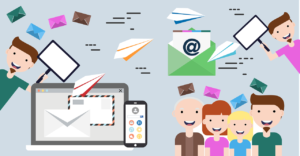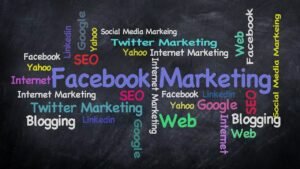
The internet has opened up a world of opportunities for people to make money online. Whether you’re a student, stay at home parent, or someone looking for a side hustle, there are many ways to generate income from the comfort of your own home. In this guide, we’ll explore some of the most popular and profitable ways to make money online, including blogging, vlogging, affiliate marketing, and selling digital products. By following these tips, you can start your own online business and achieve financial success.
Product launch formula to make money online is an exciting milestone, but it’s crucial to get everything right. A successful launch means not just having a complete product but ensuring potential customers are aware and excited about your venture. Here’s a comprehensive guide to help you plan, execute, and optimize your product launch formula while keeping your audience engaged.
The Product Launch Formula: A Comprehensive Guide for Successful Launches
Launching a product successfully is no small feat. It requires careful preparation, strategic planning, and continuous monitoring to ensure everything goes as smoothly as possible. The Product Launch Formula (PLF) is a proven system developed by Jeff Walker, designed to help entrepreneurs and business owners launch their products with precision and effectiveness. Whether you’re launching a physical product, digital course, or e-book, the steps involved in this formula are adaptable to various niches. This guide will break down the pre-launch, launch, and post-launch phases, incorporating pros, cons, and practical tips to maximize your chances of success.
Pre-Launch Phase: Laying the Groundwork for Success
Before you even consider launching your product, laying a solid foundation is crucial to ensure everything works as expected when your big day arrives. Here’s a look at what to focus on during the pre-launch phase:
1. Ensure Your Product is 100% Ready
Your product needs to deliver on its promises to avoid negative reviews and unhappy customers. A rushed product launch can undermine your credibility.
Pros:
- A product that delivers value will garner positive reviews and repeat customers.
- A polished product can build trust and position you as an expert in your field.
Cons:
- Delaying the launch may feel frustrating, but it ensures long-term success.
- Perfectionism can lead to procrastination; balance quality with timely execution.
Example: If you’re launching an online course, ensure that all videos, downloads, and lessons are ready and tested. If you’re launching a physical product, test the shipping process to ensure it’s efficient.
2. Test Your Website Thoroughly
Testing your website before launching is essential to avoid any disruptions during the launch. Ensure that every link is functional, payment gateways are operational, and your website is optimized for conversions.
Pros:
- Ensures a seamless user experience, reducing frustration for your customers.
- Builds trust and confidence in your product and brand.
Cons:
- Website testing can be time-consuming but is a crucial step to avoid complications during the live launch.
Example: Check your PayPal or Stripe integration to ensure payment processing works smoothly. Test external links to ensure there are no dead ends or broken pages.
3. Notify Your Payment Provider
If you’re expecting high sales volume, notify your payment processor beforehand. This is particularly important for small businesses or those launching for the first time. Without this step, you may face interruptions in your payment processing, which can harm your reputation.
Pros:
- Smooth transactions without service interruptions.
- You avoid frustrations and customer complaints about payment failures.
Cons:
- Delaying this step could lead to problems during peak sales times, such as high transaction volumes or fraud alerts.
4. Build and Organize Your Mailing List
A key part of the Product Launch Formula is building a well-segmented mailing list in advance. Use automation tools like Mailchimp, ConvertKit, or ActiveCampaign to gather leads and contact information from your website visitors, social media followers, and previous customers.
Pros:
- A highly targeted email list allows for more personalized marketing and higher conversion rates.
- Helps you foster a community and build anticipation for the launch.
Cons:
- Gathering contacts and ensuring compliance with privacy policies can be time-consuming.
- Managing the list requires continuous engagement.
Example: Offer a pre-launch incentive like a free guide or exclusive content in exchange for email sign-ups. This builds anticipation while giving you a targeted audience to communicate with.
Launch Phase: It’s Go Time!
Once everything is set, it’s time to kick off your product launch. The launch phase requires you to be fully present, responsive, and flexible to adapt to changes as they arise.
1. Be Present and Responsive
Throughout the launch, stay engaged with your audience. Monitor your website, servers, and payment systems closely. If you’re offering live chat support, ensure you’re available to resolve technical issues or customer inquiries promptly.
Pros:
- Increased customer satisfaction with immediate help.
- Builds trust and confidence as customers feel heard and valued.
Cons:
- Being constantly available may be demanding, especially during peak times.
Example: Use social media to provide real-time updates. If a server glitch happens, immediately inform your customers and let them know the issue is being worked on.
2. Drive Traffic to Your Launch
Generating traffic is essential for a successful product launch. Utilize social media, email marketing, and paid ads to drive traffic to your website or sales page.
Pros:
- Amplifies visibility and potential sales.
- A well-promoted launch can significantly increase revenue and exposure.
Cons:
- Managing traffic and ensuring that your website can handle increased volume is critical. Otherwise, you risk crashes.
Example: Consider running a limited-time offer or a giveaway to incentivize people to take action. This can boost engagement and create urgency.
3. Handle Feedback and Issues Quickly
Respond to customer complaints, refund requests, or technical issues promptly. Personalized responses can go a long way in building lasting customer relationships.
Pros:
- Helps you maintain a positive reputation and customer trust.
- Effective feedback management can improve your future product launches.
Cons:
- Addressing complaints can be time-consuming, but it’s crucial for long-term success.
Example: If a customer requests a refund, handle the request quickly and professionally, explaining your policies and offering support if necessary.
Post-Launch Phase: Building Long-Term Success
Once your product has launched successfully, it’s time to evaluate performance, stay connected with your audience, and make improvements based on the data gathered.
1. Engage with Your Audience
After your launch, keep the momentum going by engaging with your audience. Send out thank-you emails and encourage customers to leave feedback and testimonials that can be used on your website or social media.
Pros:
- Helps build customer loyalty and trust.
- Encourages word-of-mouth referrals and social proof.
Cons:
- Continuous engagement requires time and effort, but it strengthens your relationship with customers.
Example: Send a follow-up email to your email list thanking them for their support and asking for a review or testimonial.
2. Analyze Your Data
Review your launch data to determine what worked and what didn’t. Analyze sales numbers, traffic sources, and customer behavior to gauge the success of your launch.
Pros:
- Insights from analytics help refine your marketing strategies.
- Allows for continuous improvement in future launches.
Cons:
- Interpreting data can sometimes be overwhelming, but it’s essential for optimizing future strategies.
Example: If Facebook ads generated the most sales, focus on refining that platform for future launches.
3. Stay Connected
Maintain a strong connection with your audience post-launch. Continue to send regular newsletters, share updates on social media, and promote your products to keep customers engaged.
Pros:
- Keeps your audience engaged and interested in your future product offerings.
- Builds a loyal customer base that will return for future launches.
Cons:
- Requires ongoing effort to create engaging content and maintain relationships.
Example: Start a drip email sequence to nurture your email subscribers with valuable content, exclusive offers, or sneak peeks into your next launch.
The Product Launch Formula is a comprehensive approach that incorporates detailed preparation, execution, and follow-up strategies to ensure your product launch is a success. By following the phases of pre-launch, launch, and post-launch with careful planning, ongoing engagement, and continuous analysis, you can create a thriving business that scales over time. Whether you’re launching your first product or looking to refine your strategy for future launches, the principles of the Product Launch Formula are powerful tools for driving success and making your product stand out in a crowded market
Q: How do I know my product is ready for launch?
A: Ensure it meets customer expectations, has been thoroughly tested, and delivers on all promises.
Q: What should I do if there are technical issues during the launch?
A: Stay calm, troubleshoot quickly, and communicate transparently with your audience to resolve the issue.
Q: How can I drive more traffic to my launch?
A: Use social media campaigns, engage influencers in your niche, and run limited time promotions to create urgency.
Conclusion: Product Launch Formula
Your product launch formula is a pivotal moment, but it’s just the beginning. Prepare diligently, stay attentive during the launch, and maintain momentum afterward by engaging with your audience. With careful planning and persistence, your online business will thrive!


